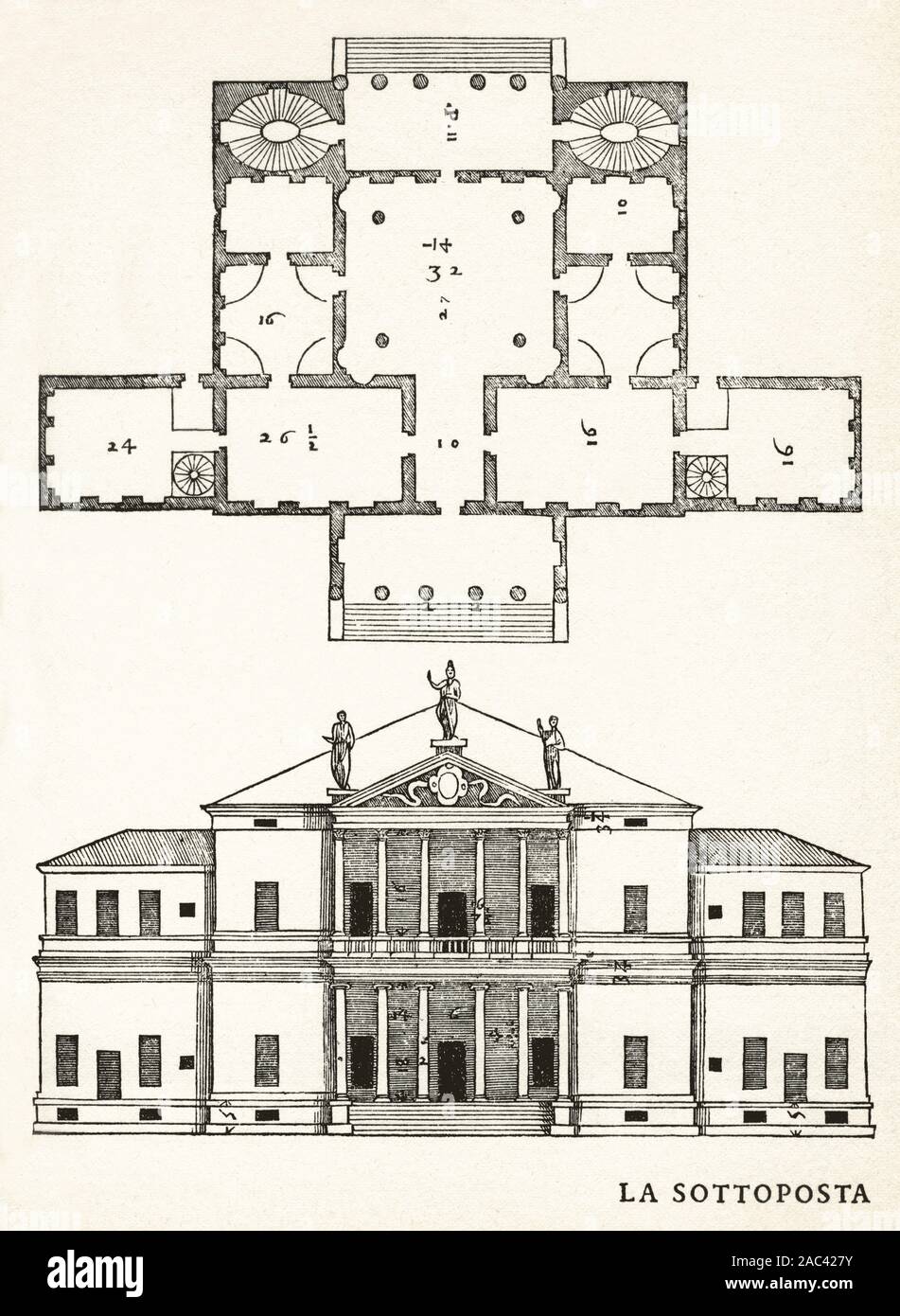
Then, coming to Villa Cornaro squeezed into a narrow city lot in the center of the village of Piombino Dese, we marvel at the architect's versatility, here serving the demands of pomp and circumstance. At Villa Poiana an austere facade - dominated by the type of arched entrance with three openings that Palladio called a serliana after the architect who first popularized it, but which almost everyone now calls a Palladian window - with only the barest hint of a temple front, leads the discussion ineluctably to Palladio's magnificent rebuilding of the principal city administration building of Vicenza, which Palladio, with a bow to the architectural language of the late Roman Empire, called the Basilica.
#ANDREA PALLADIO FOUR BOOKS OF ARCHITECTURE WINDOW SERIES#
The process of design development is explored through a series of drawings, and here again Rybczynski makes a detour, this time to Rome, where Palladio was exposed to the work of Bramante and Raphael among others. At Bagnolo di Lonigo, a drive down a country road brings us to Villa Pisani, which features the first pedimented temple-front villa facade in the Veneto. The journey continues, from villa to villa, each a unique response to the demands of site, patronage and function. It was, in all likelihood, planned by the architect from the beginning to create a home ''as outstanding and perfect as possible.'' After a brief detour into Palladio's early career, we return to the house, marveling at the elaborate multihued fresco decoration of figurative painting set into a trompe l'oeil architectural framework. We are guided skillfully through the house and alerted to the challenges faced by a young, untested architect in working for a wealthy and ambitious patron. Rybczynski gives us a vivid sense of Palladio's singular ability to situate homes of such refinement into their rustic settings so comfortably: ''Like a country gentleman in a tailored hacking coat and muddy rubber boots, the villa fits into its surroundings, even as it holds itself above them.'' Begun around 1537, this was Palladio's first attempt at creating the perfect country house, probably his first independent commission. A short drive up a hill and we arrive at the hamlet of Lonedo to find Villa Godi, set into the slope, with the Astico valley spread out below it. The quest begins in a restaurant in Lugo Vicentino, a tiny village in the foothills of the Dolomitic Alps. Listen to our podcast: Featuring conversations with leading figures in the literary world, from Colson Whitehead to Leila Slimani, the Book Review Podcast helps you delve deeper into your favorite books.That got us wondering: What is the best book that was published during that time? Nominate a book: The New York Times Book Review has just turned 125.See what’s new in October: Among this month’s new titles are novels by Jonathan Franzen, a history of Black cinema and a biography by Katie Couric.Learn what you should be reading this fall: Our collection of reviews on books coming out this season includes biographies, novels, memoirs and more.

Want to keep up with the latest and greatest in books? This is a good place to start. ''The Perfect House'' is a journey through time as well as through space, with the chapters (with one exception) ordered chronologically. The reader is taken on an excursion through the Veneto region - called by the Venetians the terraferma, and Venetian territory from the early 15th century - where Palladio dotted a sublimely beautiful landscape of vineyards and cultivated fields with a succession of unique architectural solutions, each of them a response to the humanist challenge of reviving the ancient Roman villa. Rybczynski - the author of ''Home,'' an exploration of the developing concept of comfort - defines Palladio's corpus of villas as nothing less than the beginning of domestic architecture, providing a symbolically resonant architectural vocabulary of proportions, pediments, porticos and porches adaptable to modest bungalows in the Middle West as well as to stately Southern mansions like Mount Vernon, Jefferson's Monticello and even the White House. Most still are.Īccordingly, in ''The Perfect House,'' Rybczynski looks at Palladio's villas not as monuments but as homes. Designed to be durable, useful and beautiful, these were structures that Palladio created to be lived in. While several were never completed, 17 survive more or less intact. PALLADIO, the son of a miller or maker of millstones (the historical record is ambiguous), was trained as a stonemason and through talent, energy and vision became, Witold Rybczynski says, ''the most influential architect in history.'' Both builder and theorist, he designed churches, public buildings and residences throughout Venice and the Veneto, and in 1570 wrote an architectural treatise, ''The Four Books on Architecture,'' that remains an essential item on architects' bookshelves.


 0 kommentar(er)
0 kommentar(er)
